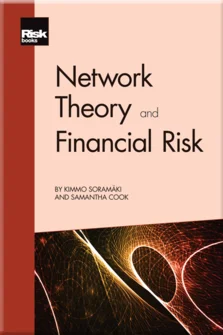Identifying Important Nodes: Centrality Metrics
Introduction to Financial Networks
Creating and Describing Networks
Identifying Important Nodes: Centrality Metrics
Uncovering Latent Structure: Clustering and Community Detection
Finding Hidden Links: Projection Networks
Fast Insights: Visualising Networks
Financial Cartography: Network Layouts
Brass Tacks: Complexity Reduction
Market Risk: Asset Correlation Networks
Liquidity and Operational Risk: Interbank Payment Networks
Counterparty and Systemic Risk: Exposure Networks
The fields of statistical mechanics and social network analysis have seen significant progress towards understanding the structure and functioning of complex networks. A multitude of centrality measures has been developed, each with an explicit or implicit network process in mind. When deciding which measure is best for the question at hand, it is useful to think about the assumptions of the centrality metrics in terms of processes taking place in the networks. Borgatti (2005) identifies several stylised processes. According to this typology, a process can move through a network via geodesic paths, paths, trails or walks. Processes that travel via geodesic (shortest) paths are, for example, problems of the “travelling salesman” type – ie, they always take the shortest route between two nodes. Processes that travel via paths need not necessarily use the shortest route, but do not visit any node more than once. These can, for example, be viral infections (a person becomes immune once infected, so cannot become infected again) or the routing of Internet traffic.
Processes that travel along trails do not visit any given link more than once. An example of this is the spread of gossip
Copyright Infopro Digital Limited. All rights reserved.
As outlined in our terms and conditions, https://www.infopro-digital.com/terms-and-conditions/subscriptions/ (point 2.4), printing is limited to a single copy.
If you would like to purchase additional rights please email info@risk.net
Copyright Infopro Digital Limited. All rights reserved.
You may share this content using our article tools. As outlined in our terms and conditions, https://www.infopro-digital.com/terms-and-conditions/subscriptions/ (clause 2.4), an Authorised User may only make one copy of the materials for their own personal use. You must also comply with the restrictions in clause 2.5.
If you would like to purchase additional rights please email info@risk.net











